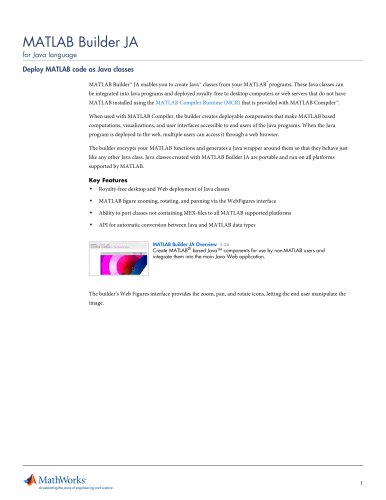
Catalog excerpts

OPC Toolbox Read and write data from OPC servers and data historians OPC Toolbox™ provides a connection to OPC DA and OPC HDA servers, giving you access to live and historical OPC data directly from MATLAB® and Simulink®. You can read, write, and log OPC data from devices, such as distributed control systems, supervisory control and data acquisition systems, and programmable logic controllers, that conform to the OPC Foundation Data Access (DA) standard. You can read and analyze data from any data historian that conforms to the OPC Foundation Historical Data Access (HDA) standard. The product includes Simulink blocks that let you model online supervisory control and perform hardware-in-the-loop controller testing. Key Features ▪ OPC Foundation Data Access standard v2.05a support ▪ OPC Foundation Historical Data Access standard v1.20 support ▪ Simultaneous data logging and numerical processing ▪ Simultaneous connections to multiple OPC servers ▪ Access to historical data for analysis and statistical processing ▪ Communication with OPC servers using synchronous or asynchronous operations OPC Data Access Techniques OPC Toolbox lets you discover, access, and read raw and processed data from any data historian compliant with the OPC Historical Data Access standard. You can also access live data from an OPC Data Access server in three ways: ▪ Execute all OPC Toolbox functions directly from the MATLAB command line or incorporate them into your own MATLAB applications ▪ Use the graphical user interface (GUI) to rapidly connect to OPC DA servers; to create and configure OPC Toolbox objects; and to read, write, and log data ▪ Use the Simulink blocks from OPC Toolbox to read and write data to and from an OPC DA server while simulating a system Simulink model created using Simulink blocks from OPC Toolbox. These blocks let you communicate with OPC data directly to and from Simulink and your process system.
Open the catalog to page 1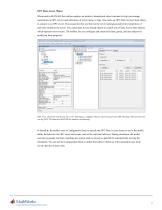
OPC Data Access Object When used in MATLAB, the toolbox employs an intuitive, hierarchical object structure to help you manage connections to OPC servers and collections of server items, or tags. You create an OPC Data Access Client object to connect to an OPC server. This connection lets you browse the server namespace and retrieve properties of each item stored on the server. You create Data Access Group objects to control sets of Data Access Item objects, which represent server items. The toolbox lets you configure and control all client, group, and item objects by modifying their...
Open the catalog to page 2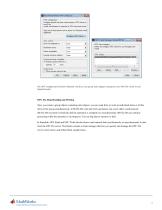
I Block Parameters: OPC Configura... | g || B ||j Configure pseudo real-time control options, OPC clients to model, and behavior in response to OPC errors and events. Only one of these blocks can be active in a Simulink model. - Error control- Read/write errors: Server unavailable: Pseudo real-time violation: Pseudo real-time simulation— \V\ Enable pseudo real-time si. Output ports— | Show pseudo real-time late.. H OPC Client Manager (BoilerOPCSh... | □ |l B ||j Define and configure OPC clients for use throughout the Add... | | Delete | | Edit... | : Connect | pisconn.. The OPC...
Open the catalog to page 3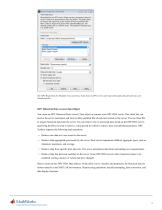
I Block Properties: OPC Read Read data from an OPC server. Reads can be synchronous (from the cache or device) or asynchronous (from the device). The output ports are vectors the same size as the number of items specified in the block. Value is output as a vector of the specified data type. The optional Quality port is a UINT16 vector. The optional Timestamp port Import from Workspace... | Move down Read mode: Synchronous (cache) Value port data tvpe: double \J\ Show quality port \V\ Show timestamp port as: (0) Seconds since start (.') Serial date number The OPC Read block for Simulink. You...
Open the catalog to page 4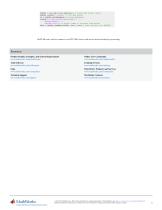
hdaCbj = ope . hda . Client (rr.Server) ; * create HDA Client object hdaCbj.connect * ccnr.ect tc OPC HDA server as = hdaCb j . getNarr.eSpace ^ browse narr.espace itrr.lDs = {'Saw-toothed Waves . Real3 ■ , ... ■ Random. UInt2 ■}; h choose items to retrieve from server data = hdaCbj . readRaw (itrf.lDs, now-1, now) ^ read the data into MATLA3 MATLAB code, used to connect to an OPC HDA server and access historical data for processing. Product Details, Examples, and System Requirements Trial Software Technical Support Online User Community Training Services Third-Party Products and Services...
Open the catalog to page 5All The MathWorks catalogs and technical brochures
-
MATLAB Production Server
6 Pages
-
Database Toolbox
4 Pages
-
MATLAB Report Generator
4 Pages
-
Stateflow
8 Pages
-
SimEvents
7 Pages
-
SimDriveline
7 Pages
-
SimHydraulics
7 Pages
-
SimPowerSystems
8 Pages
-
Simulink Control Design
5 Pages
-
Aerospace Blockset
5 Pages
-
SimRF
6 Pages
-
Simulink Coder
6 Pages
-
Embedded Coder
8 Pages
-
Simulink PLC Coder
4 Pages
-
Fixed-Point Designer
9 Pages
-
MATLAB Coder
5 Pages
-
Simulink 3D Animation
10 Pages
-
Gauges Blockset
2 Pages
-
Simulink Report Generator
3 Pages
-
Polyspace Bug Finder
6 Pages
-
global-optimization-toolbox
10 Pages
-
Phased Array System Toolbox
9 Pages
-
Simulink Design Verifier
7 Pages
-
Simulink Design Optimization
10 Pages
-
Filter Design HDL Coder
5 Pages
-
Bioinformatics Toolbox
9 Pages
-
SimBiology
6 Pages
-
Computer Vision System Toolbox
10 Pages
-
DSP System Toolbox
11 Pages
-
Fuzzy Logic Toolbox
5 Pages
-
Polyspace Client for C/C++
5 Pages
-
xPC Target
5 Pages
-
SimMechanics
7 Pages
-
Simscape
7 Pages
-
Simulink
6 Pages
-
Data Acquisition Toolbox
8 Pages
-
Image Processing Toolbox
7 Pages
-
Signal Processing Toolbox
10 Pages
-
Control System Toolbox
6 Pages
-
Symbolic Math Toolbox?
6 Pages
-
Parallel Computing Toolbox?
7 Pages
-
MATLAB®
6 Pages
-
Mapping Toolbox 3.2
7 Pages
-
Instrument Control Toolbox
7 Pages
-
Optimization Toolbox 6.0
14 Pages
Archived catalogs
-
MATLAB Release Notes
505 Pages
-
C and Fortran API Reference
263 Pages
-
External Interfaces
649 Pages
-
Function Reference: Volume 3 (P-Z)
1696 Pages
-
Function Reference: Volume 2 (F-O)
1568 Pages
-
Function Reference: Volume 1 (A-E)
1298 Pages
-
Creating Graphical User Interfaces
520 Pages
-
3-D Visualization
212 Pages
-
Graphics
667 Pages
-
MATLAB Programming Tips
66 Pages
-
Programming Fundamentals
840 Pages
-
Data Analysis
220 Pages
-
Mathematics
316 Pages
-
MATLAB® Getting Started Guide
250 Pages



